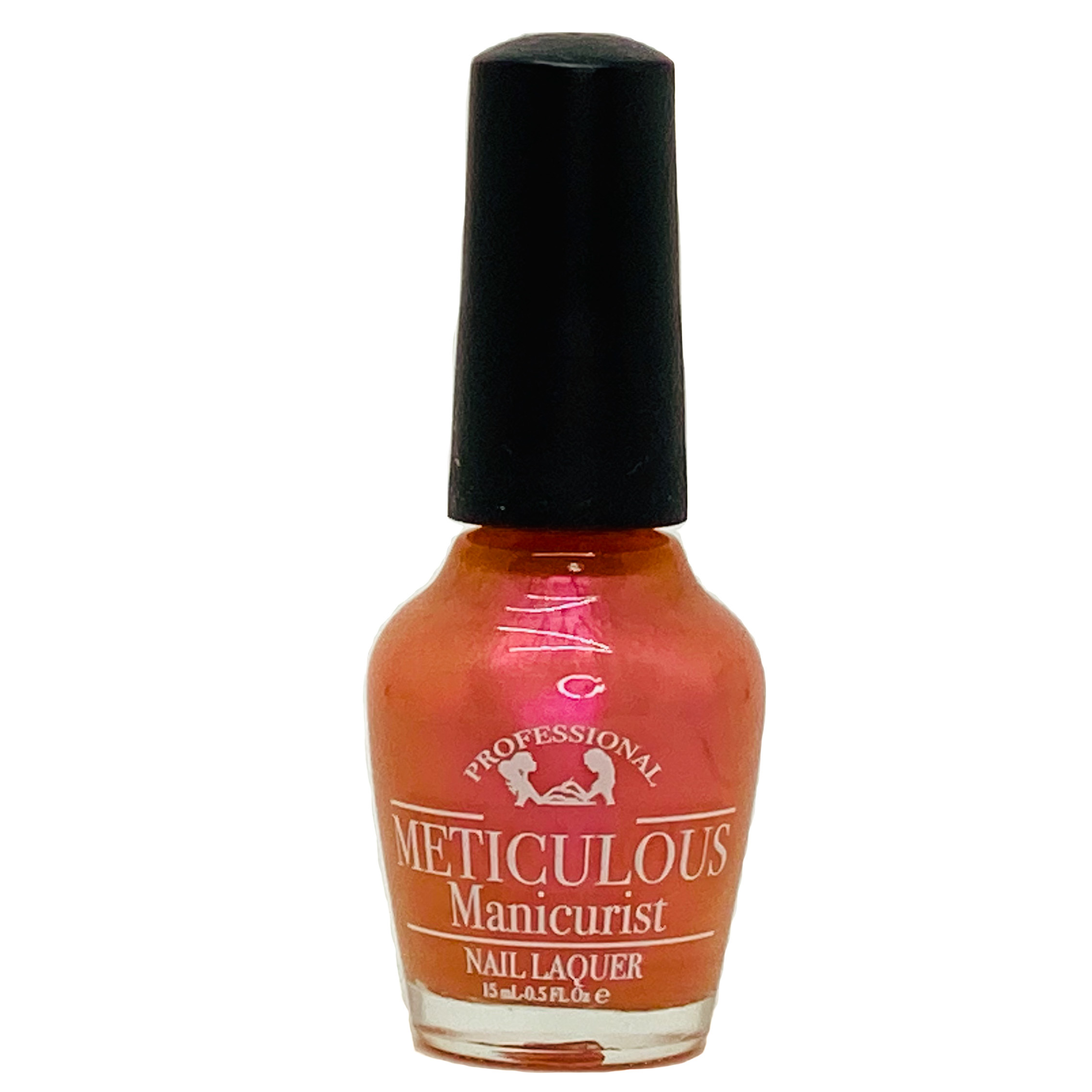Introducing The Meticulous Manicurist Nail Laquer
Fabulous long-lasting colors are free of carcinogenic ingredients!
Cruelty-Free, Vegan and Made in U.S.A.
 (no Formaldehyde, Formaldehyde Resin, DBP, Toluene,
(no Formaldehyde, Formaldehyde Resin, DBP, Toluene,
Camphor, Ethyl Tosylamide, Xylene, TPHP or Parabens)
Formaldehyde is used to harden and strengthen nail polishes, also serving as a preservative that protects against bacterial growth. ... At this low level, formaldehyde is not dangerous. However, exposure to larger doses of formaldehyde in the air or on the skin may cause cancer of the throat, nose, and blood.
Formaldehyde resin is a by-product of formaldehyde that makes its way into many nail polish formulas that include formaldehyde. It has been the subject of fewer human tests than the other four chemicals. However, preliminary studies show that it can cause severe skin irritation and allergic reactions, skin depigmentation, and loss of nerve sensation.
Dibutyl phthalate (pronounced thal-ate), or DBP, is used mainly in nail products as a solvent for dyes and as a plasticizer that prevents nail polishes from becoming brittle. Manufacturers use Phthalates as fragrance ingredients in many other cosmetics, but consumers won't find these listed on the label.
Toluene is the nail polish ingredient used to create a smooth application and finish. It has a sweet, pungent smell and is in most conventional nail polish removers. However, its fumes are highly toxic; studies have shown that exposure to Toluene can cause neurological damage, decreased brain function, impaired breathing, hearing loss, and nausea. When inhaled too frequently by pregnant women, it may result in impaired fetal development. Animal studies link Toluene to reproductive impairment, immune system toxicity, and blood cancers like malignant lymphoma.
Camphor is the ingredient used to give conventional nail polishes their glossy, shiny appearance. It is less toxic than the first three ingredients listed above, and companies still use it in cold remedies such as vapor rubs and nasal sprays.
However, the safety of camphor has recently been called into question. It has been shown to trigger severe skin irritation and allergic reactions when applied topically, and inhaling its fumes can cause nausea, dizziness, and headaches. Observational studies have also linked camphor exposure to organ damage, such as liver dysfunction. Camphor in personal care products is limited to a concentration of 11% in the US, and it is being phased out in markets within the European Union.
Ethyl tosylamide is a plasticizer that has been banned from beauty products by the European Commission due to its antibiotic properties and potential contribution to antibiotic resistance (it's still allowed in the United States).
Xylene is a petroleum-based solvent found in paint thinner and nail polish that can cause symptoms like headaches and dizziness with short-term exposure.
TPHP is a suspected endocrine disruptor that is easily absorbed into the bloodstream following nail polish application. The evidence against TBHP is a little less clear, though it is a skin irritant with acute toxicity.
Parabens have been making headlines lately because of their possible involvement in breast cancer. Parabens are used as a preservative in nail polish, but when they coat your nails, they can interfere with proper nutrient absorption, which can leave your nails brittle, cracked, or otherwise unhealthy.
![The Meticulous Manicurist [home link] The Meticulous Manicurist [home link]](includes/templates/responsive_sheffield_blue/images/logo.gif)
.png)







































